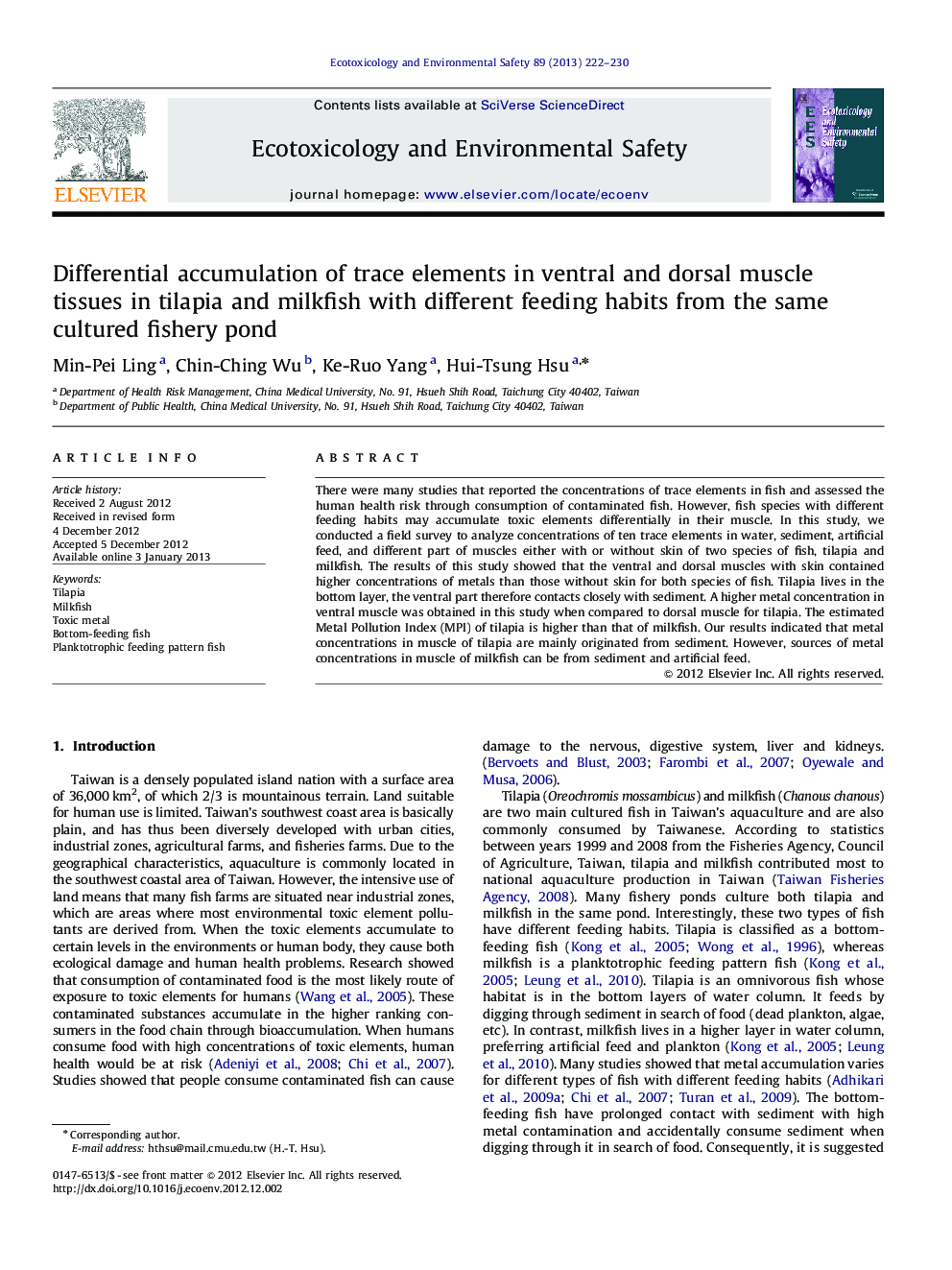| Article ID | Journal | Published Year | Pages | File Type |
|---|---|---|---|---|
| 4420605 | Ecotoxicology and Environmental Safety | 2013 | 9 Pages |
There were many studies that reported the concentrations of trace elements in fish and assessed the human health risk through consumption of contaminated fish. However, fish species with different feeding habits may accumulate toxic elements differentially in their muscle. In this study, we conducted a field survey to analyze concentrations of ten trace elements in water, sediment, artificial feed, and different part of muscles either with or without skin of two species of fish, tilapia and milkfish. The results of this study showed that the ventral and dorsal muscles with skin contained higher concentrations of metals than those without skin for both species of fish. Tilapia lives in the bottom layer, the ventral part therefore contacts closely with sediment. A higher metal concentration in ventral muscle was obtained in this study when compared to dorsal muscle for tilapia. The estimated Metal Pollution Index (MPI) of tilapia is higher than that of milkfish. Our results indicated that metal concentrations in muscle of tilapia are mainly originated from sediment. However, sources of metal concentrations in muscle of milkfish can be from sediment and artificial feed.
► This study examines metal concentrations in farmed fish from different habitats and trophic level. ► Tilapia has higher metal concentrations in ventral muscles than in dorsal muscles. ► Muscles with skin have higher metal concentrations than those without skin. ► Bottom feeding-fish have higher metal concentrations than planktotrophic-feeding fish.
